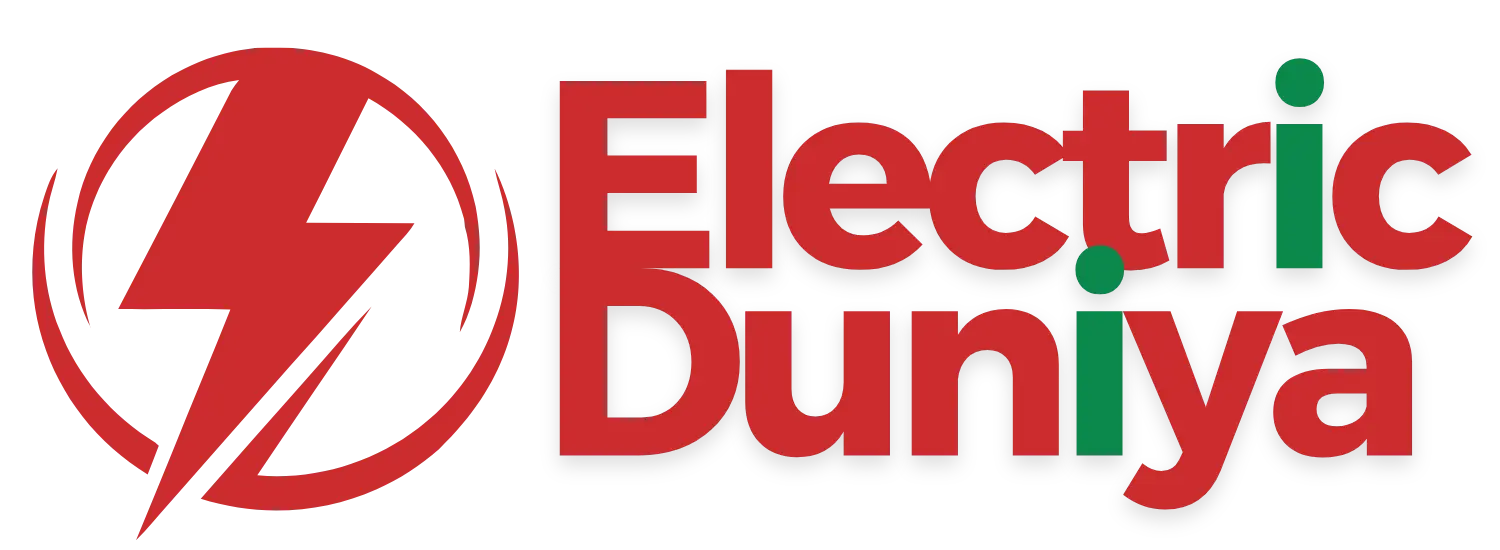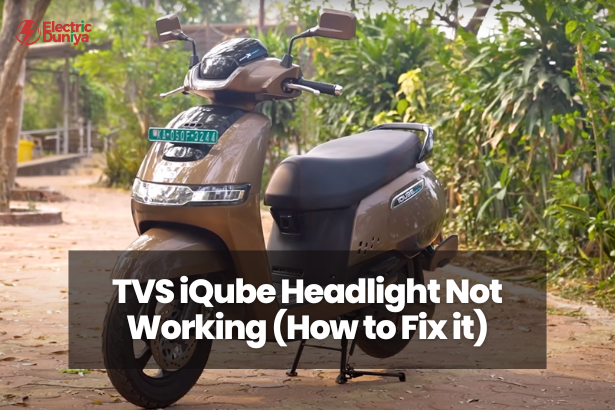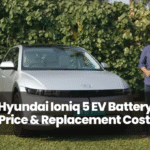If you’ve landed here, chances are your TVS iQube’s headlight has suddenly stopped working—and you’re stuck fiddling with the switch, staring into darkness, and whispering, “Why now?”
Trust me, you’re not alone. I’ve been there, squinting into the night, wondering if my eco-ride had ghosted me.
Before you assume the worst—blown LEDs, dead battery, or divine scooter sabotage—let’s dig into the real causes, step by step.
This guide will walk you through everything you need to know about the TVS iQube’s headlight system, from common issues to advanced troubleshooting—all written from real-world experience.
How TVS iQube’s Headlight System Works?
What makes the iQube’s headlight setup unique is its smart integration with the scooter’s broader electric control unit (ECU) and battery management system (BMS).
It’s a sealed LED headlamp that activates automatically when the ignition is turned on—no switches, no manual overrides.
Here’s How It Works:
- Automatic Activation (AHO): As soon as the ignition is turned on, the LED headlight powers up instantly.
- Self-Check Mode: The digital instrument cluster performs a brief diagnostic light sequence to confirm all systems are operational.
- LED Design: Unlike halogen bulbs, the LED unit is sealed, compact, and designed for energy efficiency, but harder to replace if it fails.
These seemingly small features combine to deliver a seamless riding experience—until something breaks, and you’re left diagnosing what went wrong.
Common Causes of the iQube Headlight Isn’t Working
Let’s know why the headlight fails on an electric scooter like the TVS iQube?
1. Low Battery or Power Distribution Issues
Electric scooters rely on a consistent power supply from the lithium-ion battery. A low battery voltage or a fault in the lighting circuit will prevent the headlamp from receiving power.
Even if your scooter turns on, the headlight won’t function if the voltage drops below the operating threshold.
2. Loose or Corroded Connectors
Scooters encounter vibrations, rain, and dust daily. Over time, electrical connectors—especially those near the front fairing—may corrode or disconnect. This disrupts the circuit and causes intermittent or complete headlamp failure.
3. Burnt-Out LED Module
Although LED headlights are long-lasting, they’re not immune to failure. Overheating, water ingress, or manufacturing defects can cause premature burnout. Unlike filament bulbs, LED modules often require complete replacement if they stop working.
4. AHO Circuit Malfunction
The automatic headlamp system is managed by a control relay. If this fails, the headlight doesn’t receive the signal to turn on, even if the rest of the scooter functions normally.
5. ECU or Firmware Glitch
Software anomalies in the Electronic Control Unit (ECU) can prevent the headlight from activating, despite the scooter powering up. These are tricky to detect and may require diagnostic tools or a firmware update.
6. Water Damage
Washing your scooter with a high-pressure hose or riding through deep puddles can push moisture into sensitive connectors and modules, shorting out the headlight.
7. High/Low Beam Switch Failure
Though the main light activates automatically, beam toggling is handled by a handlebar-mounted switch. If this wears out or gets wet, the headlight may get stuck on one beam mode or fail to toggle entirely.
How to Fix the TVS iQube Headlight?
Here’s my personal, practical method—tested over time—to help you identify and resolve headlight issues on your iQube.
Step 1: Check the Power Source
- Ensure the battery is fully charged and properly mounted.
- Turn the ignition ON and observe if the instrument cluster lights up fully.
- Use a multimeter to test voltage at the headlight socket (should read ~12V+).
Step 2: Inspect All Wiring
- Follow the wiring harness from the battery to the headlight housing.
- Look for loose connectors, corrosion (green residue), or burnt wires.
- Don’t forget the ground/earth wire—a single missed connection can disable the whole headlight system.
Step 3: Examine the LED Unit
- Remove the headlight cover if possible and visually inspect the LED module.
- If there’s no visible damage but it won’t light up even with voltage supplied, the module might need replacement.
- Remember: sealed LED units are not DIY-friendly—replacing them requires precision.
Step 4: Check the Fuse and Controller
- Locate the fuse for the lighting system (usually inline or near the battery compartment). Replace if blown.
- If the fuse is intact but there’s still no power, the issue could lie in the lighting controller or ECU.
Step 5: Software or ECU Reset
- Disconnect the battery, wait for a few minutes, then reconnect.
- Some users have fixed lighting issues with a simple ECU reset or firmware flash at an authorized service center.
- Check for any error codes or blinking indicators on the display cluster.
Final Thoughts
The phrase “TVS iQube headlight not working” may seem simple, but it often masks a complex system issue.
Whether you’re dealing with a loose wire, a dead LED, or a rogue software glitch, your best bet is to start with the basics—battery, wiring, and module checks—before escalating to ECU resets or expert help.
And if you’ve had your own scooter-lighting horror story, drop a comment or tip below. Remember: every electric commuter has their day in the dark. The real trick is how you find your way back to the light.







